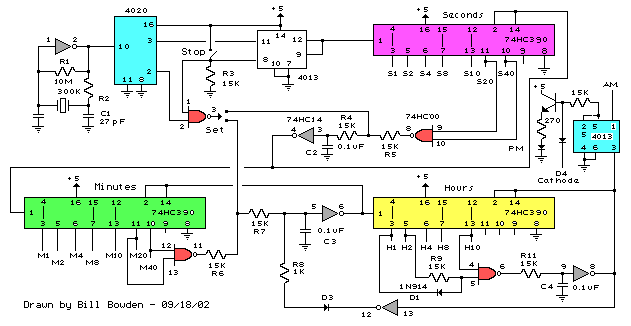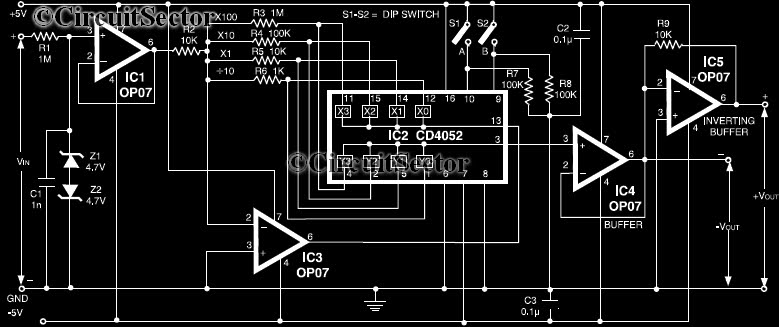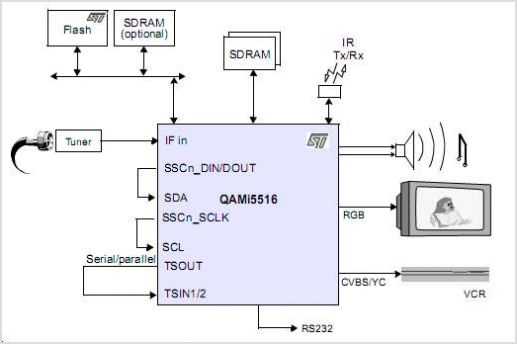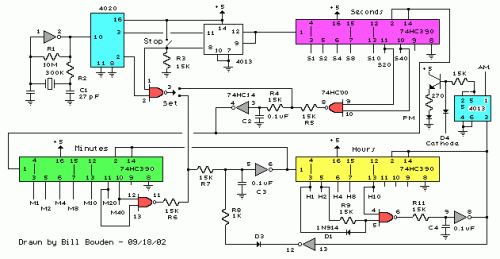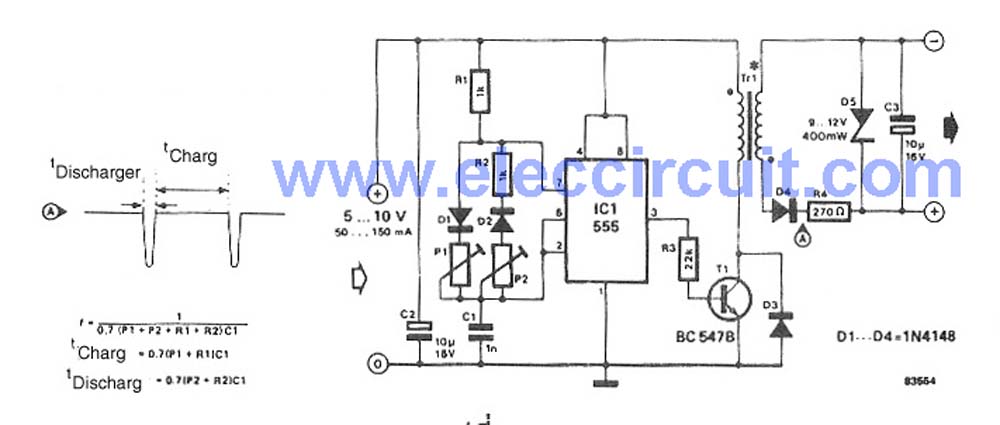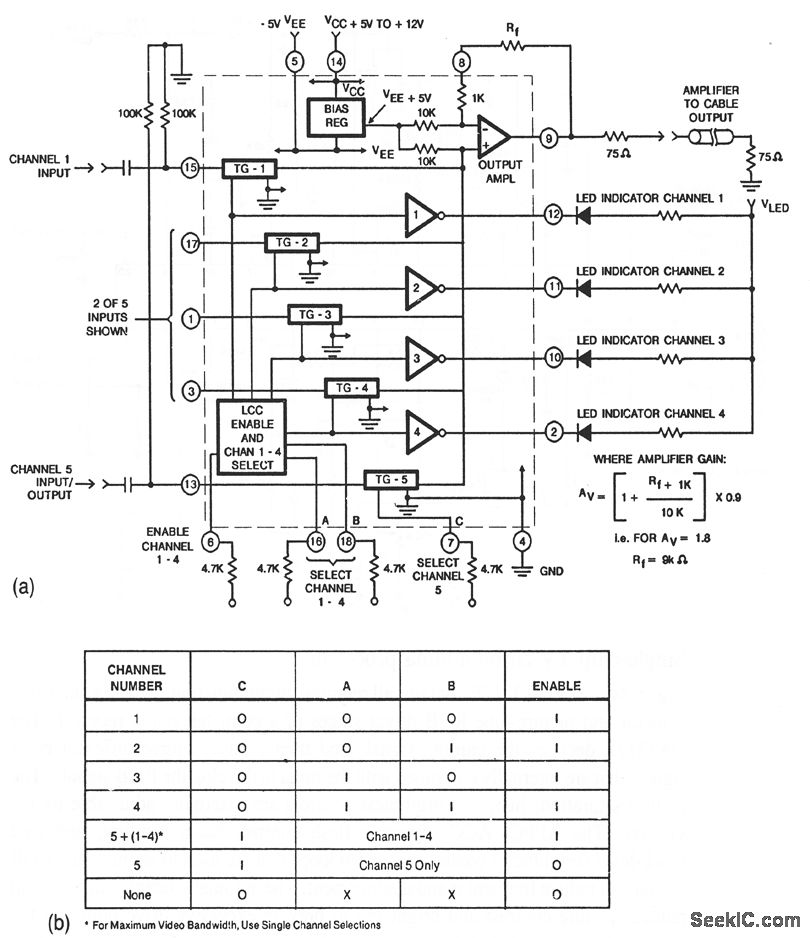
Analog to Digital Converters - Successive Approximation Typeworking

Analog to Digital Converters - Successive Approximation Type Analog to Digital Converter, working, circuit diagram.
The Successive Approximation Register (SAR) Analog to Digital Converter (ADC) is a widely used type of ADC that converts an analog signal into a digital output. The operation of a SAR ADC is based on a binary search algorithm that successively approximates the input voltage level. The conversion process begins by sampling the input voltage and comparing it to a reference voltage. This is achieved through a series of steps involving a comparator, a digital-to-analog converter (DAC), and a register.
The circuit diagram typically includes the following components:
1. **Input Signal**: The analog signal to be converted, which can vary in voltage.
2. **Sample and Hold Circuit**: This circuit captures the input signal and holds it constant during the conversion process.
3. **Comparator**: This component compares the held voltage against the output of the DAC.
4. **Digital-to-Analog Converter (DAC)**: The DAC generates a voltage that corresponds to the digital value currently held in the SAR.
5. **Successive Approximation Register (SAR)**: This register controls the conversion process, adjusting the binary output based on the comparator's results.
6. **Clock Signal**: A clock signal synchronizes the operation of the SAR and other components to ensure accurate timing during the conversion.
7. **Output**: The final output is a digital representation of the input analog signal, typically in binary form.
The operation can be summarized as follows: The SAR begins with the most significant bit (MSB) set to high and the rest to low. The DAC outputs a voltage corresponding to this binary value. The comparator checks if this voltage is greater than or less than the input signal. Based on this comparison, the SAR adjusts the bits accordingly, toggling each bit from high to low or vice versa, until the entire binary representation of the input voltage is determined. This process continues until all bits have been evaluated, resulting in a precise digital output that corresponds to the analog input.
The SAR ADC is favored for its balance of speed and resolution, making it suitable for a variety of applications, including data acquisition, instrumentation, and consumer electronics.Analog to Digital Converters - Successive Approximation Type Analog to Digital Converter, working,circuit diagram.. 🔗 External reference
The Successive Approximation Register (SAR) Analog to Digital Converter (ADC) is a widely used type of ADC that converts an analog signal into a digital output. The operation of a SAR ADC is based on a binary search algorithm that successively approximates the input voltage level. The conversion process begins by sampling the input voltage and comparing it to a reference voltage. This is achieved through a series of steps involving a comparator, a digital-to-analog converter (DAC), and a register.
The circuit diagram typically includes the following components:
1. **Input Signal**: The analog signal to be converted, which can vary in voltage.
2. **Sample and Hold Circuit**: This circuit captures the input signal and holds it constant during the conversion process.
3. **Comparator**: This component compares the held voltage against the output of the DAC.
4. **Digital-to-Analog Converter (DAC)**: The DAC generates a voltage that corresponds to the digital value currently held in the SAR.
5. **Successive Approximation Register (SAR)**: This register controls the conversion process, adjusting the binary output based on the comparator's results.
6. **Clock Signal**: A clock signal synchronizes the operation of the SAR and other components to ensure accurate timing during the conversion.
7. **Output**: The final output is a digital representation of the input analog signal, typically in binary form.
The operation can be summarized as follows: The SAR begins with the most significant bit (MSB) set to high and the rest to low. The DAC outputs a voltage corresponding to this binary value. The comparator checks if this voltage is greater than or less than the input signal. Based on this comparison, the SAR adjusts the bits accordingly, toggling each bit from high to low or vice versa, until the entire binary representation of the input voltage is determined. This process continues until all bits have been evaluated, resulting in a precise digital output that corresponds to the analog input.
The SAR ADC is favored for its balance of speed and resolution, making it suitable for a variety of applications, including data acquisition, instrumentation, and consumer electronics.Analog to Digital Converters - Successive Approximation Type Analog to Digital Converter, working,circuit diagram.. 🔗 External reference
